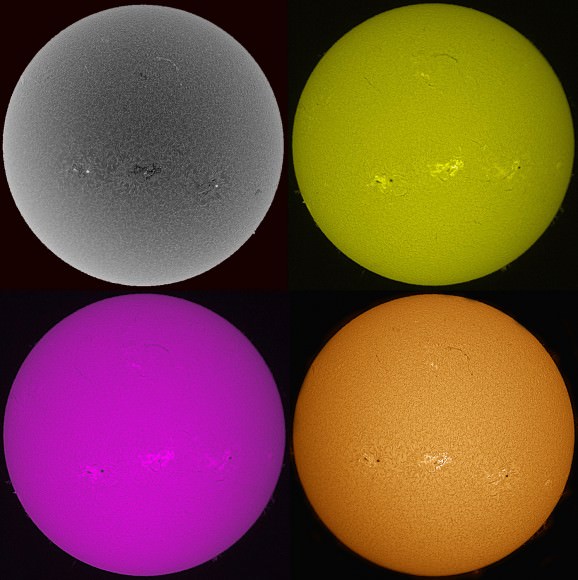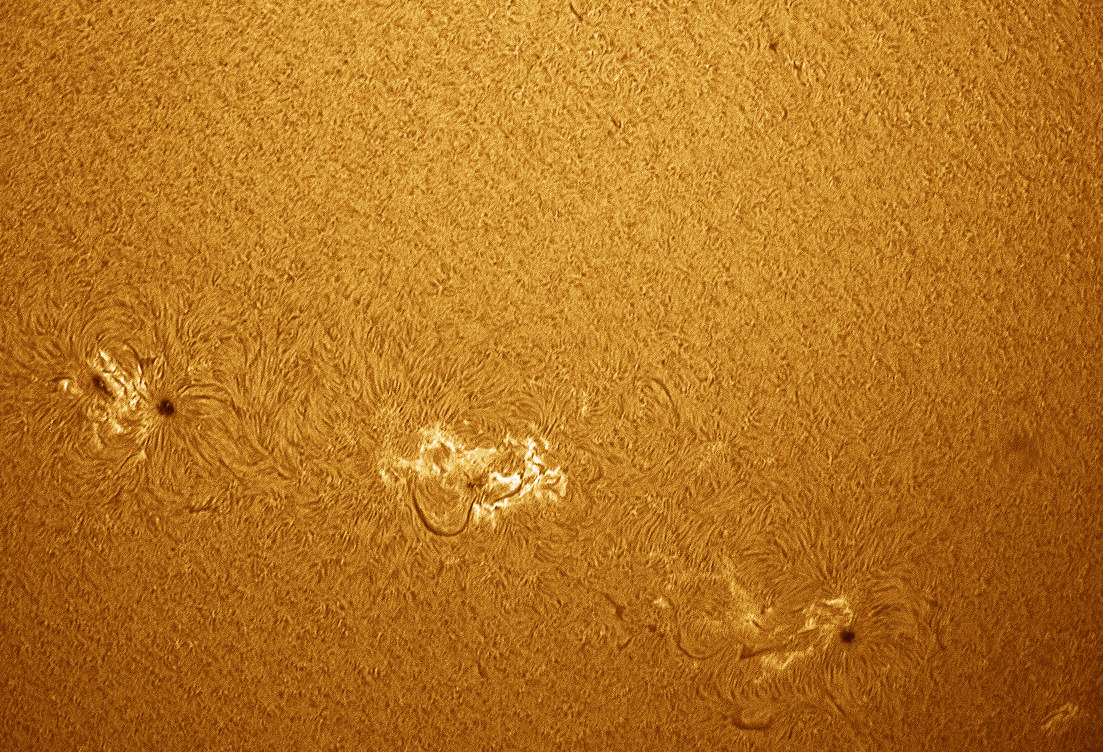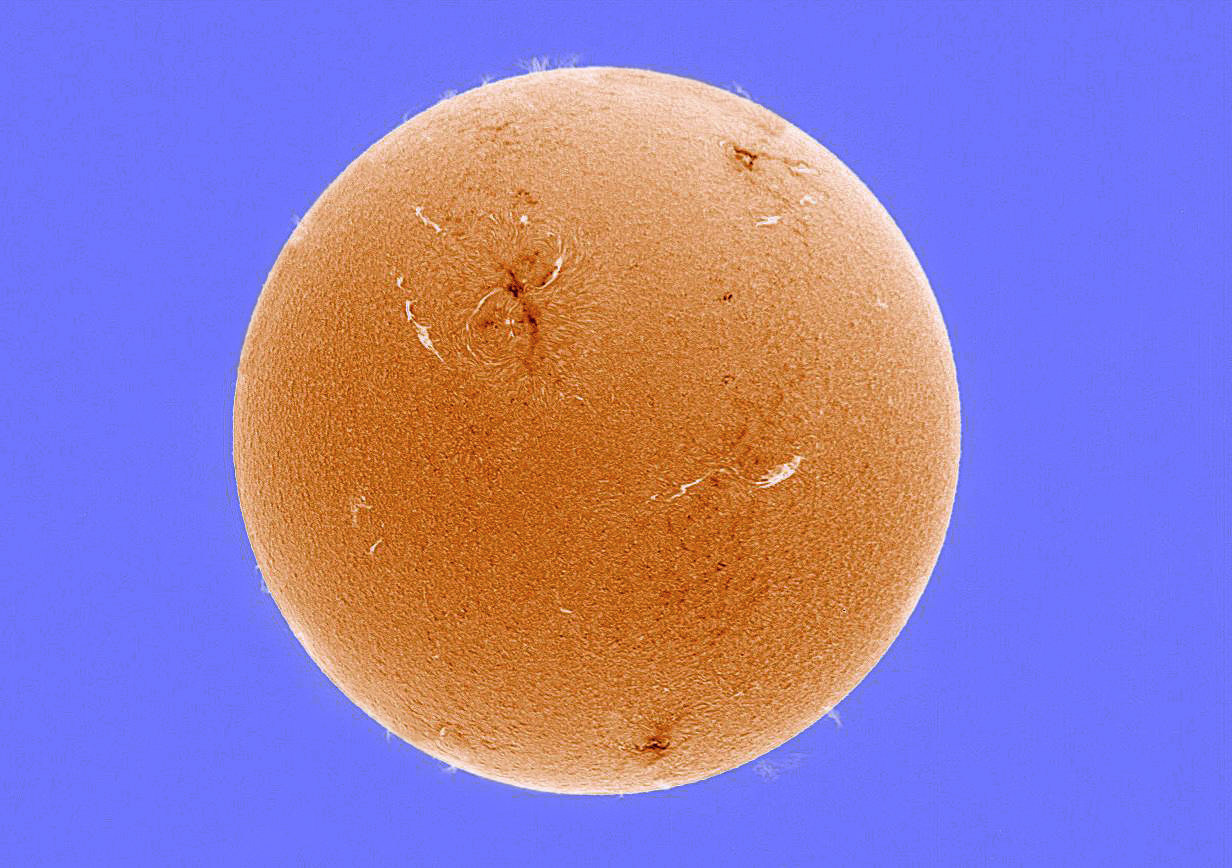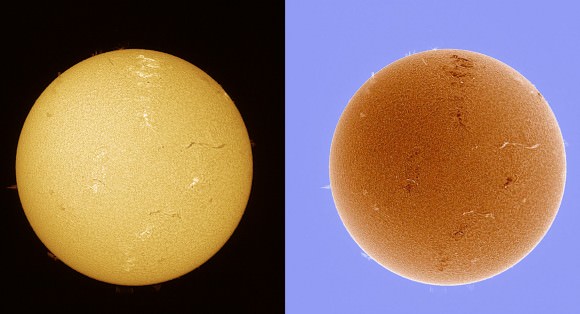[/caption]
The summer Sun (for us in the northern hemisphere) is getting active! Here are images and videos of recent activity, which include sunspots and an M-class flare. Above is a close-up look at four active regions taken by César Cantú from the Chilidog Observatory in Monterrey, Mexico.
Below, see a strong but brief M9-class solar flare which occurred on July 31, 2011 from Active Region 1261, captured by the Solar Dynamics Observatory. Scientists from SDO say that because it was brief it appears not to have hurled a large coronal mass ejection (CME) outwards.

Here’s a comparative look at the sunspots from August 1, 2011, taken by César Cantú from the Chilidog Observatory in Mexico. “Taking advantage of the program that I could attach Lucam Recorder in AVI (video) different bands of light, here is this comparative look in negative, white light, the calcium band and hydrogen-alpha band,” said Cantú. He used a 90 Coronado telescope and camera with dual ektalon DMK41.
See more at the Chilidog Observatory website, Astronomía Y Astrofotografía.
Here’s a video clip from SDO showing an interesting alignment of three good-sized sunspot groups that appear to be marching across the Sun, taken July 28-29, 2011.
See more, and keep up with all the activity on the Sun at the SDO website.



